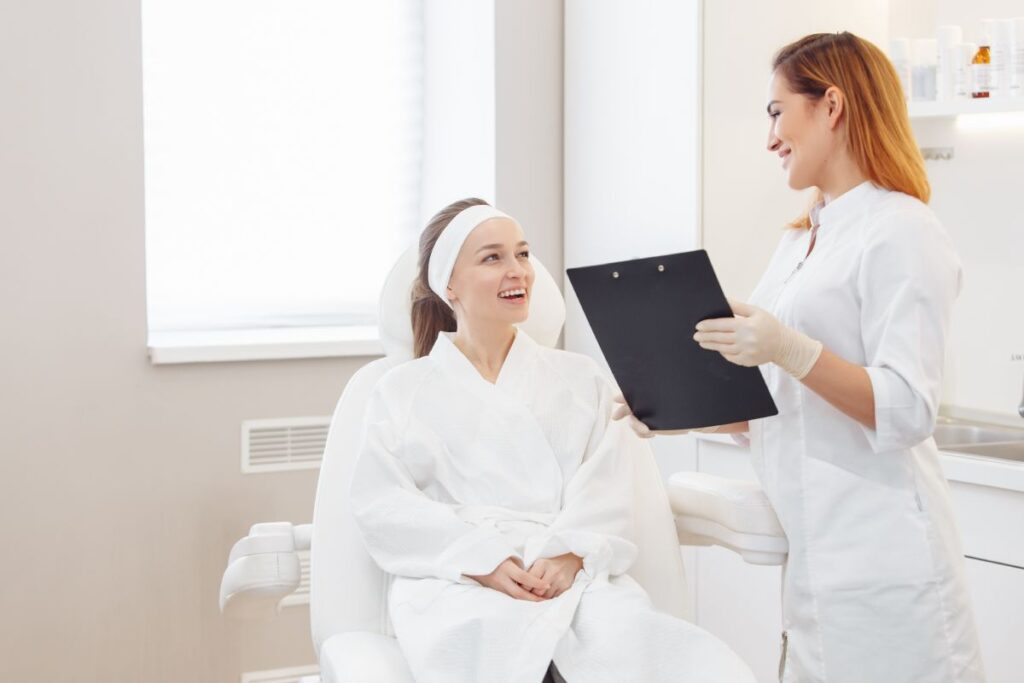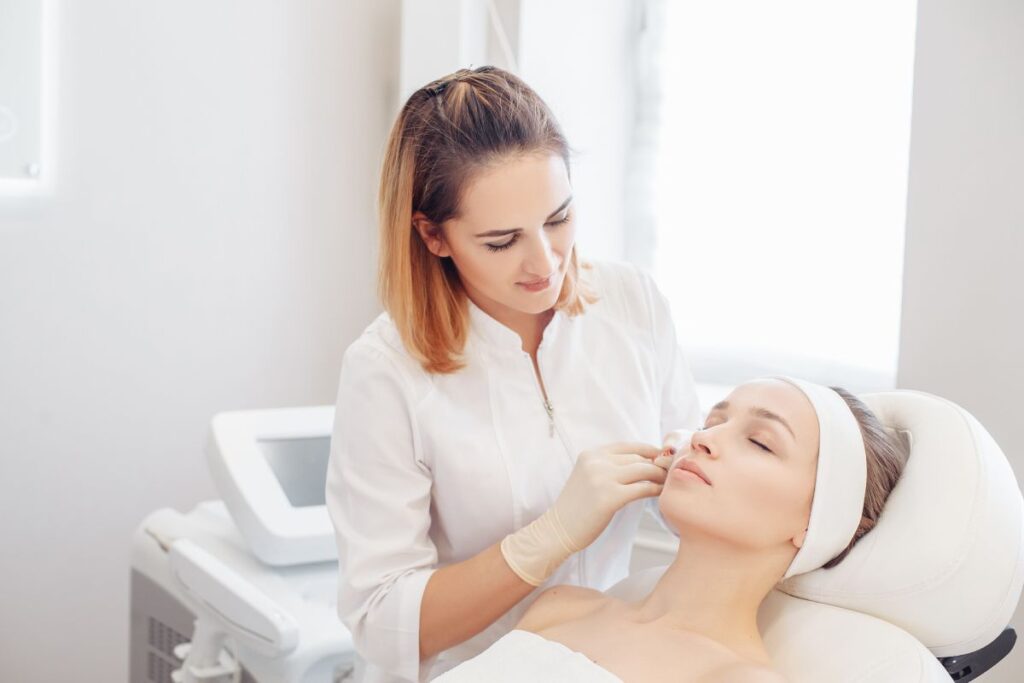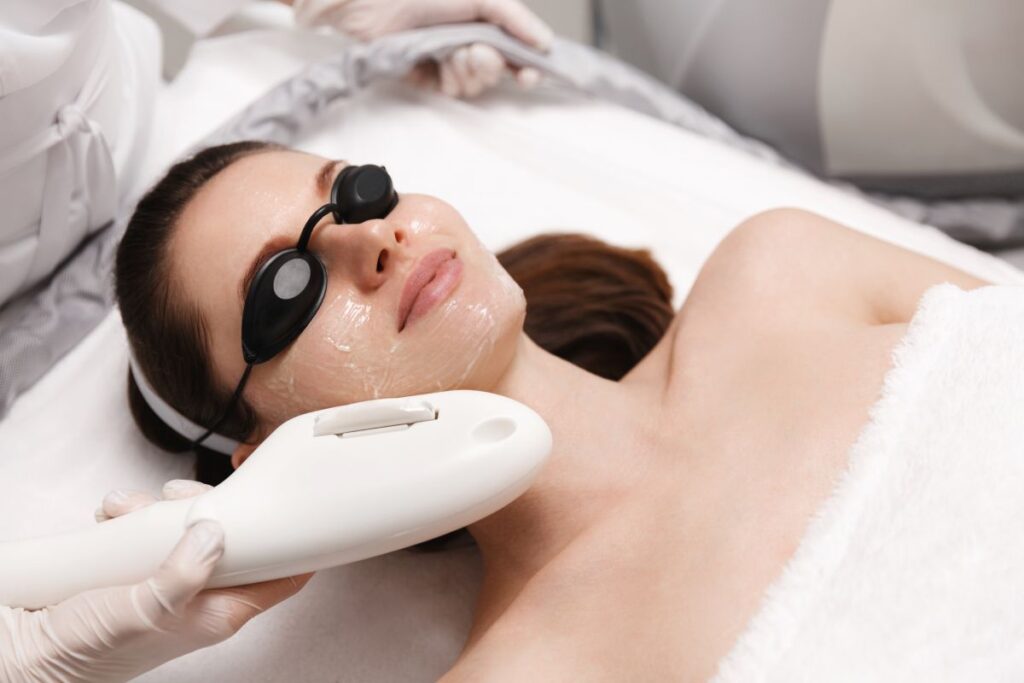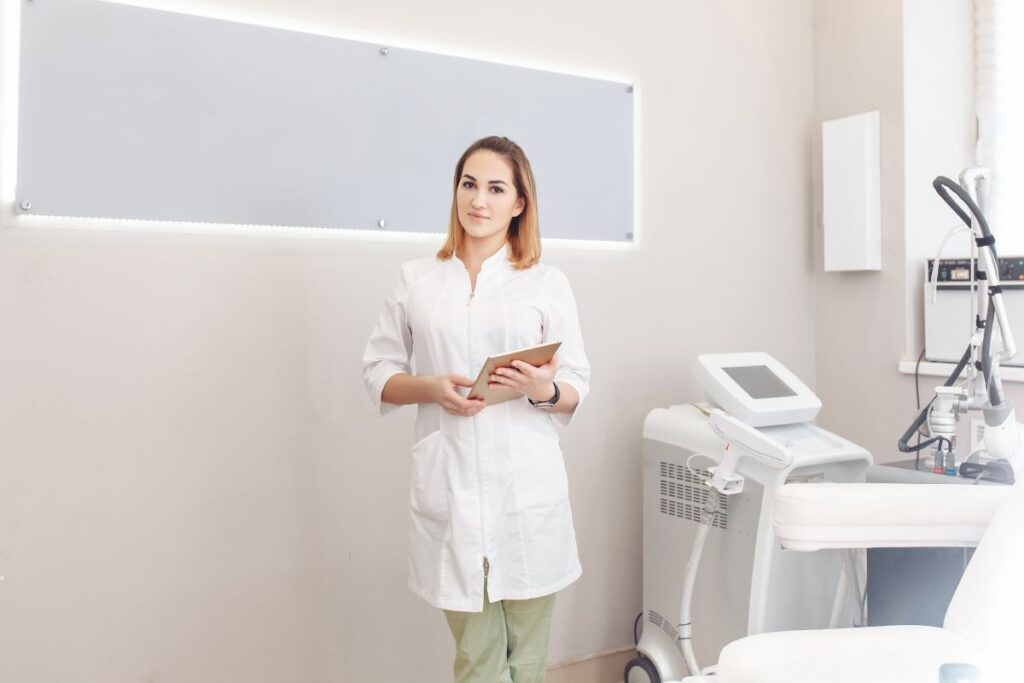Photofacial
Transform your skin with photofacial treatments at Elume Medspa. Book your photofacial appointment today! Book Photofacial TreatmentAbout Photofacials
Photofacial treatments, also known as IPL (Intense Pulsed Light) therapy, are non-invasive skin rejuvenation procedures designed to improve skin tone, texture, and overall appearance. By targeting pigmentation, redness, and other imperfections, photofacials help you achieve a more radiant and youthful complexion.
How Do Photofacials Work?
Photofacials use Intense Pulsed Light (IPL) technology to deliver targeted bursts of light energy into the skin. The light penetrates the skin’s surface and is absorbed by unwanted pigmentation or blood vessels, breaking them down naturally over time. Simultaneously, the light stimulates collagen production, which improves skin elasticity and texture. This dual-action process results in a brighter, more even complexion with long-lasting benefits.
Benefits Of Photofacial Treatments
Photofacials offer a wide range of benefits, helping you achieve a refreshed and youthful appearance:
- Diminishes sun damage, age spots, and uneven skin tone
- Boosts collagen to improve skin elasticity and reduce fine lines
- Enhances smoothness and reduces rough patches
- Tailored to address your unique skin concerns and goals
- Achieve noticeable results without surgery or lengthy recovery
- Effectively treats redness and visible capillaries
What To Expect During A Photofacial
Consultation
Preparation
Treatment
Post-Treatment
Personalized Treatment Plans
Your photofacial treatment begins with a consultation with one of our licensed professionals.
During this session, your provider will assess your skin, discuss your concerns, and determine if IPL therapy is the right solution for your needs. We will create a personalized treatment plan tailored to your goals, ensuring optimal results.

Skin Cleansing & Gel Application
On the day of your photofacial treatment, your skin will be cleansed to remove any makeup, oil, or impurities. A cooling gel will be applied to the treatment area to protect your skin and enhance your comfort during the procedure.
Your provider will also provide protective eyewear to shield your eyes from the IPL light.

IPL Treatment
Using a handheld IPL device, your provider will deliver controlled pulses of light to the treatment area. You may feel a mild snapping sensation as the light is applied, but the procedure is generally well-tolerated.
The session typically lasts 20–30 minutes, depending on the size of the area being treated. Your provider will ensure precise, even coverage to address your specific concerns, such as pigmentation, redness, or fine lines.

After Treatment Care
After the treatment, your skin may appear slightly red or feel warm, similar to a mild sunburn. These effects usually subside within a few hours. Your provider will apply a soothing moisturizer and sunscreen to protect your skin and promote healing.
You’ll also receive detailed aftercare instructions, including avoiding sun exposure and using gentle skincare products. Over the following days, you may notice dark spots flaking off as your skin renews itself, revealing a brighter, more even complexion.

Photofacial Treatment
FAQs
How Long Do Ombre Powder Brows Last?
Ombre Powder Brows typically last 1–3 years, depending on factors such as your skin type, lifestyle, and aftercare. Regular touch-ups can help maintain their appearance over time.
Are Ombre Powder Brows Better Than Microblading?
It depends on your preferences and skin type. Ombre Powder Brows offer a soft, makeup-like finish and tend to heal more evenly on oily or combination skin. Microblading creates hair-like strokes for a more natural, textured look but may not last as long or be as suitable for certain skin types.
Does Ombre Powder Brows Tattooing Hurt?
Most patients find Ombre Powder Brows tattooing to be tolerable. A topical numbing cream is applied before the procedure to minimize discomfort. You may feel a slight scratching sensation, but the process is designed to be as comfortable as possible.
Are Photofacials Worth It?
Yes, photofacials are highly effective for treating various skin concerns, including sun damage, redness, and uneven skin tone. They provide noticeable improvements with minimal downtime, making them a convenient and worthwhile option for those seeking skin rejuvenation. Additionally, the treatment’s ability to stimulate collagen production offers long-term benefits for overall skin health.
Are Photofacials Better Than Microneedling?
Photofacials and microneedling address different skin concerns and may complement each other. Photofacials are ideal for reducing pigmentation, redness, and visible veins, while microneedling is better suited for improving skin texture, acne scars, and fine lines. The best treatment depends on your specific goals, and your provider can recommend the most suitable option during a consultation.
How Long Do Photofacial Results Last?
Photofacial results can last several months to a year, depending on your skin type, lifestyle, and post-treatment care. Regular sunscreen use and maintenance sessions as recommended by your provider can help prolong the benefits.